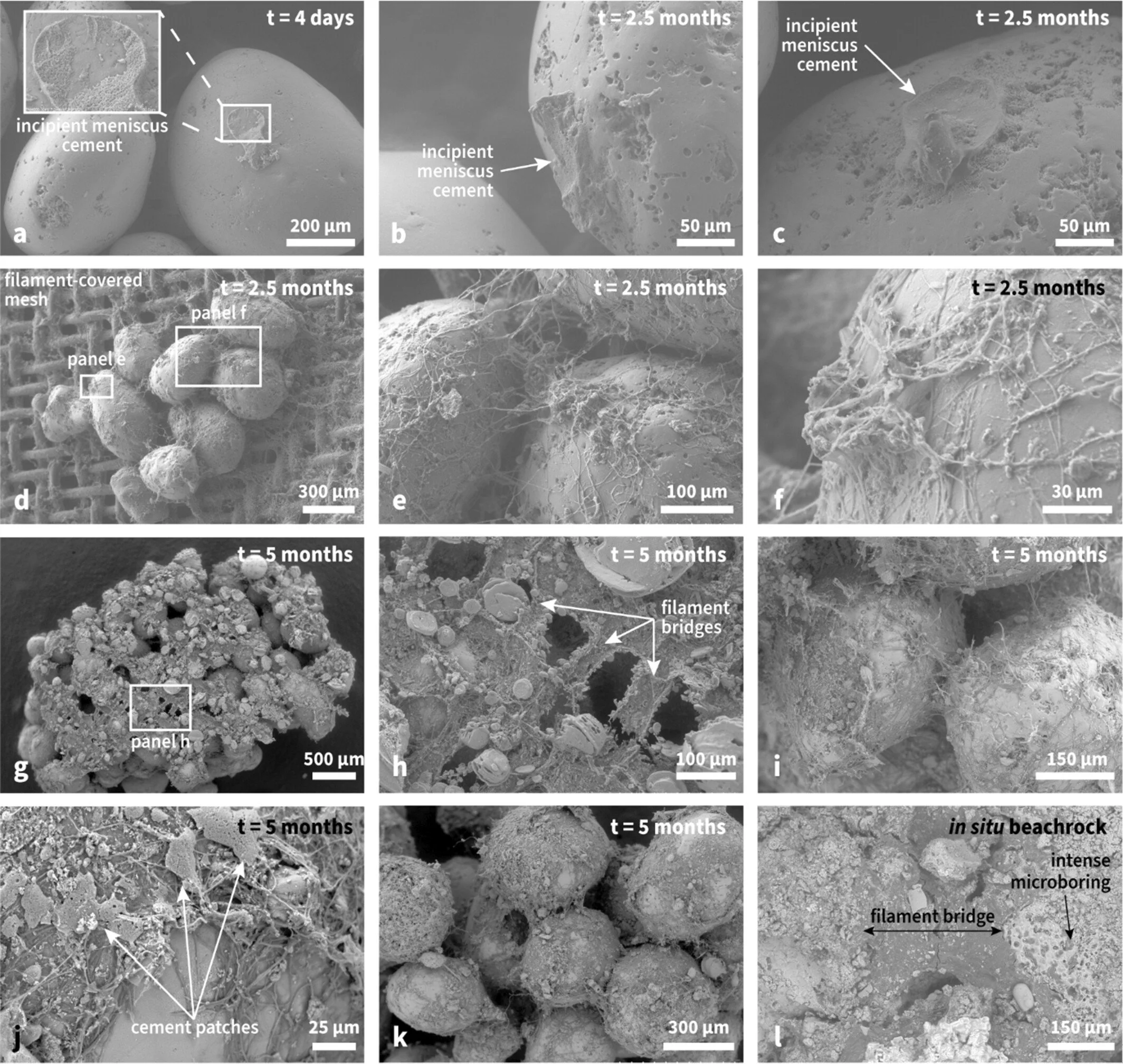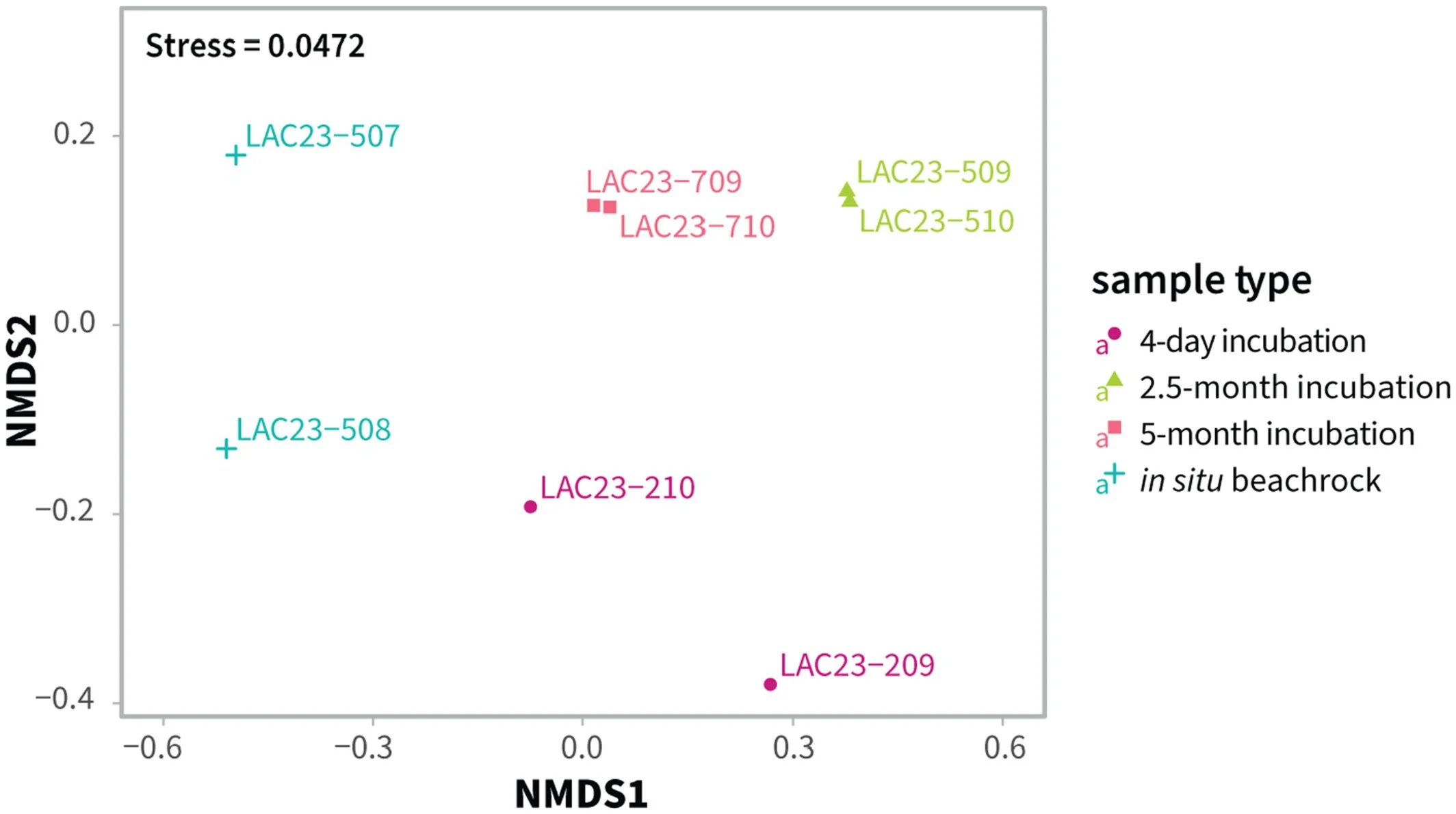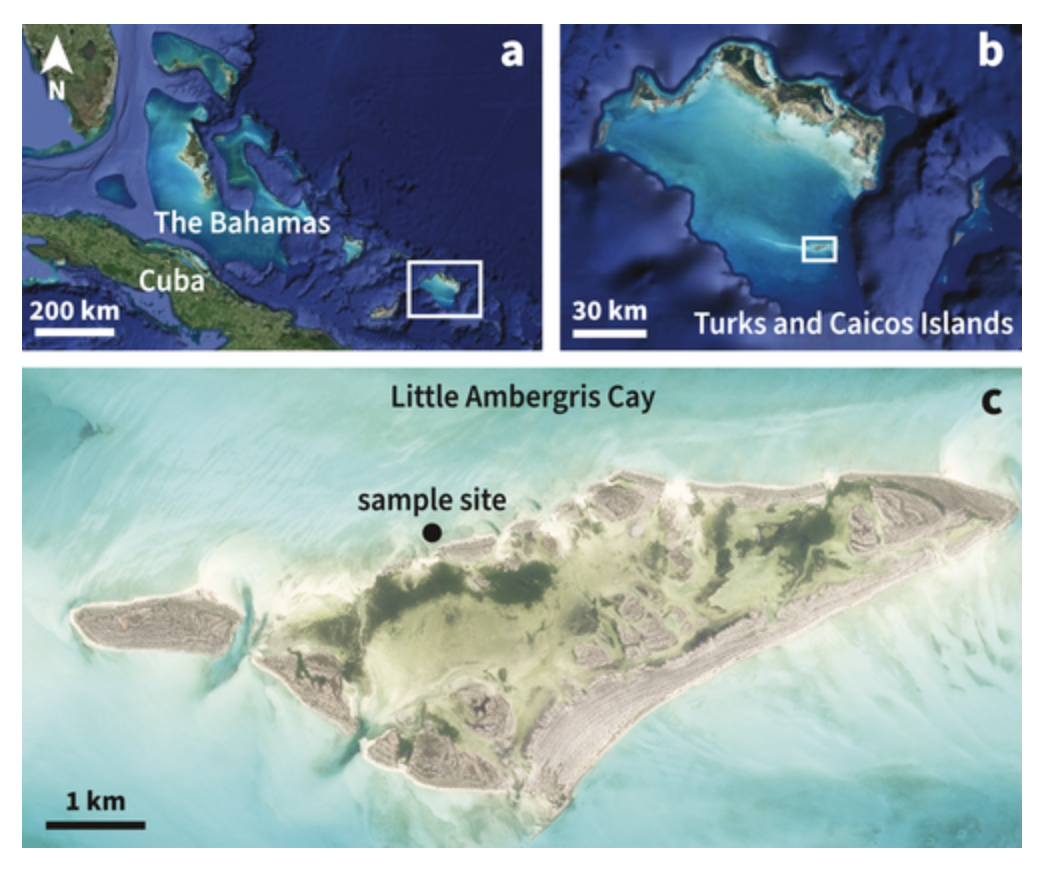How to Make a Rock in 150 Days: Observations of Biofilms Promoting Rapid Beachrock Formation
Published: 7 February 2025: https://doi.org/10.1111/gbi.70009
Authors: Brianna M. Hibner, Elizabeth J. Trower, Marjorie D. Cantine, Jacqueline E. Dodd, Maya L. Gomes
Abstract: Beachrock is a type of carbonate-cemented rock that forms via rapid cementation in the intertidal zone. Beachrock is a valuable geological tool as an indicator of paleoshorelines and may protect shorelines from erosion. Previous studies present a range of hypotheses about the processes enabling rapid beachrock formation, which span purely physicochemical mechanisms to a significant role for microbially mediated carbonate precipitation. We designed a set of in situ field experiments to explore the rates and mechanisms of beachrock formation on Little Ambergris Cay (Turks and Caicos Islands). Our field site has evidence for rapid beachrock cementation, including the incorporation of 20th century anthropogenic detritus into beachrock. We deployed pouches of sterilized ooid sand in the upper intertidal zone and assessed the extent of cementation and biofilm development after durations of 4 days, 2.5 months, and 5 months. We observed incipient meniscus cements after only 4 days of incubation in the field, suggesting that physicochemical processes are important in driving initial cementation. After 2.5 months, we observed substantial biofilm colonization on our experimental substrates, with interwoven networks of Halomicronema filaments binding clusters of ooids to the nylon pouches. After 5 months, we observed incipient beachrock formation in the form of coherent aggregates of ooids up to 1 cm in diameter, bound together by both networks of microbial filaments and incipient cements. We interpret that the cyanobacteria- dominated beachrock biofilm community on Little Ambergris Cay plays an important role in beachrock formation through the physical stabilization of sediment as cementation proceeds. Together, this combination of physicochemical and microbial mechanisms enables fresh rock to form in as little as 150 days.
SEM images of samples from field incubation experiments (a–k) and in situ beachrock.
NMDS plot showing variance in microbial community as a function of incubation duration and compared with in situ beachrock samples
Revisiting Elevated δ13C Values of Sediment on Modern Carbonate Platforms
Published: 31 July 2024: https://doi.org/10.1029/2023GL107703
Authors: Elizabeth J. Trower, Brianna M. Hibner, Tyler A. Lincoln, Jacqueline E. Dodd, Cedric J. Hagen, Marjorie D. Cantine, Maya L. Gomes
Abstract: The measured carbon isotopic compositions of carbonate sediments (δ13Ccarb) on modern platforms are commonly 13C-enriched compared to predicted values for minerals forming in isotopic equilibrium with the dissolved inorganic carbon (DIC) of modern seawater. This offset undermines the assumption that δ13Ccarb values of analogous facies in the rock record are an accurate archive of information about Earth's global carbon cycle. We present a new data set of the diurnal variation in carbonate chemistry and seawater δ13CDIC values on a modern carbonate platform. These data demonstrate that δ13Ccarb values on modern platforms are broadly representative of seawater, but only after accounting for the recent decrease in the δ13C value of atmospheric CO2 and shallow seawater DIC due to anthropogenic carbon release, a phenomenon commonly referred to as the 13C Suess effect. These findings highlight an important, yet overlooked, aspect of some modern carbonate systems, which must inform their use as ancient analogs.
Variation in carbonate chemistry of platform water samples across a diurnal cycle on Caicos Platform
Little Ambergris Cay Sampling Site Map



